It climbs a trellis, sprawls over a garden wall, and creates an atmosphere of abundance and peace. Long, trumpet-shaped blooms in pairs of two are a favorite of pollinators, especially hummingbirds. We’re describing honeysuckle!
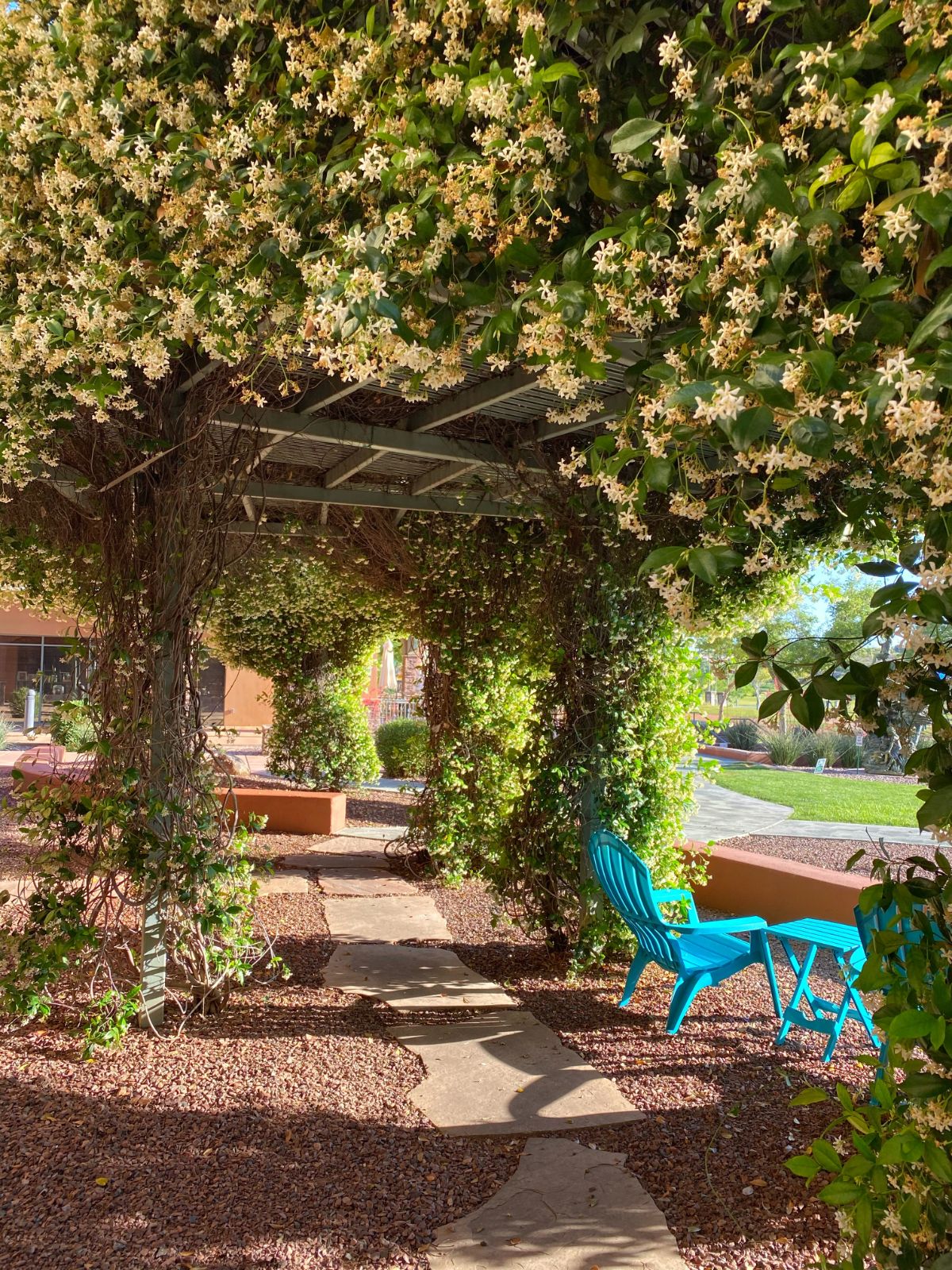
Honeysuckle can make a fantastic addition to our properties, but it can also be a nuisance. Some honeysuckles are gorgeous, intelligent choices, and others are a mistake. Learn how to tell the difference and how to propagate and grow the good kinds of honeysuckle.
Jump to:
Is Honeysuckle Invasive?
Honeysuckle sometimes gets a bad rap. Some are categorized as invasive species for their ability to aggressively colonize and take over. While not all honeysuckles are invasive, making sure you aren’t inadvertently adding to the problem by planting one is worth the effort. Below are some of the more common invasives to avoid. Many states actually prohibit the planting or sale of these species.
- Tartarian – Lonicera tatarica
- Japanese honeysuckle – Lonicera japonica
- Morrow’s honeysuckle – Lonicera morrowii
- Amur honeysuckle – Lonicera maackii
- Bell’s honeysuckle – Lonicera x bella
Is It a Good Honeysuckle or a Bad Honeysuckle?
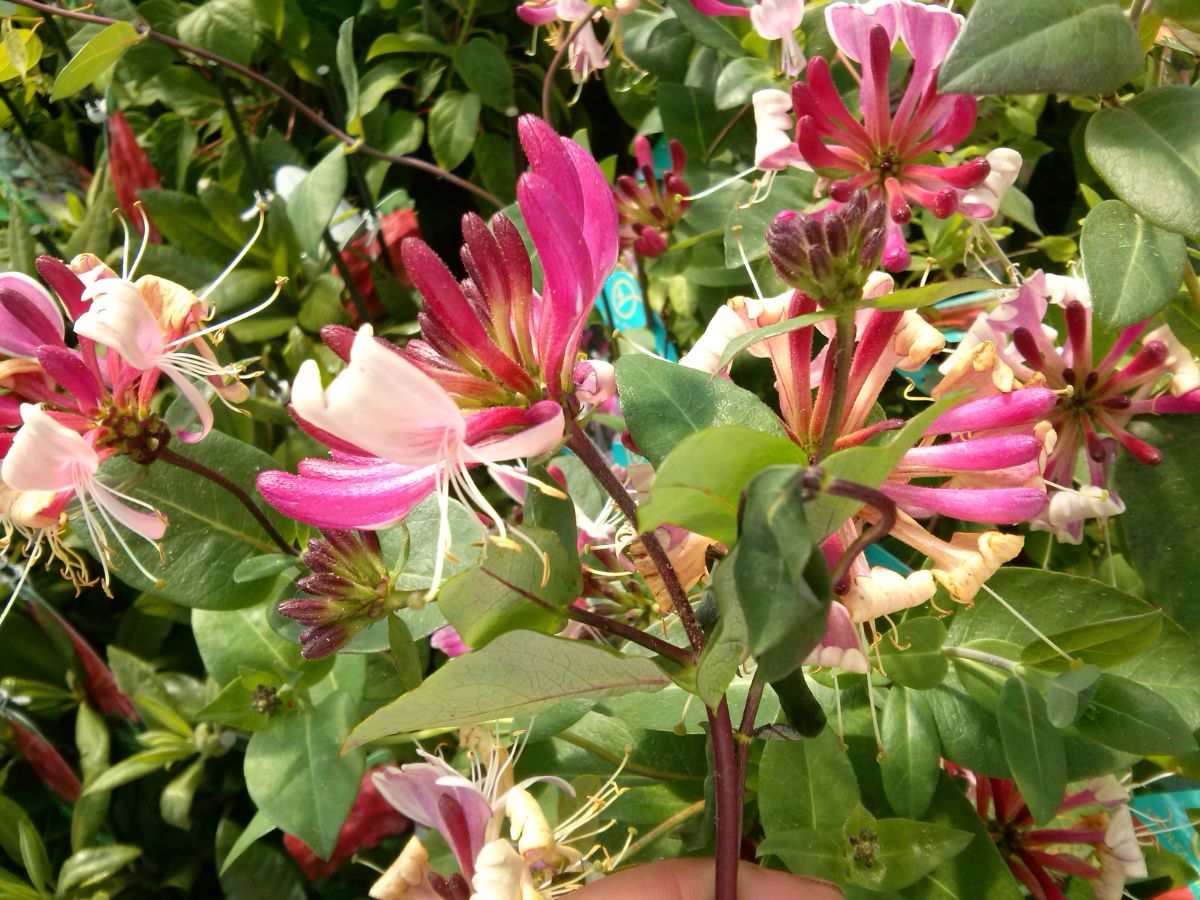
True honeysuckles belong to the genus Lonicera, of which there are about 180 species.
Most honeysuckle sold by garden centers and nurseries will be the “good” or non-invasive types, but check the tag to be sure. Japanese honeysuckle (L. japonica) is beautiful, and some garden centers will carry it, even though it is invasive.
If you aren’t sure or need some guidance, search online by your state’s name and “invasive honeysuckle species” to double-check. Write down the botanical names of the invasives before you go shopping. Cultivars of L. sempervirens, L. canadensis, and hybrids like ‘Goldflame’ are usually safe to plant.
While it is primarily bush or shrub-type honeysuckles that are invasive and to be avoided, some shrubby honeysuckles are native to North America. The American honeysuckle (L. canadensis) is a shrub version native to the United States. Northern bush honeysuckles, which are from the Diervilla genus, are also native.
Of course, this article discusses propagating honeysuckle, but you should never attempt to propagate an invasive variety.
Some Lonicera spp. are cold hardy to USDA zone 4, but many more are adapted to zones 5-9. In addition to beautiful flowers, honeysuckles will make small berries in the autumn, which are attractive to wildlife. Some varieties are highly fragrant, while others are nearly indetectable to the nose.
How to Grow Honeysuckles from Cuttings
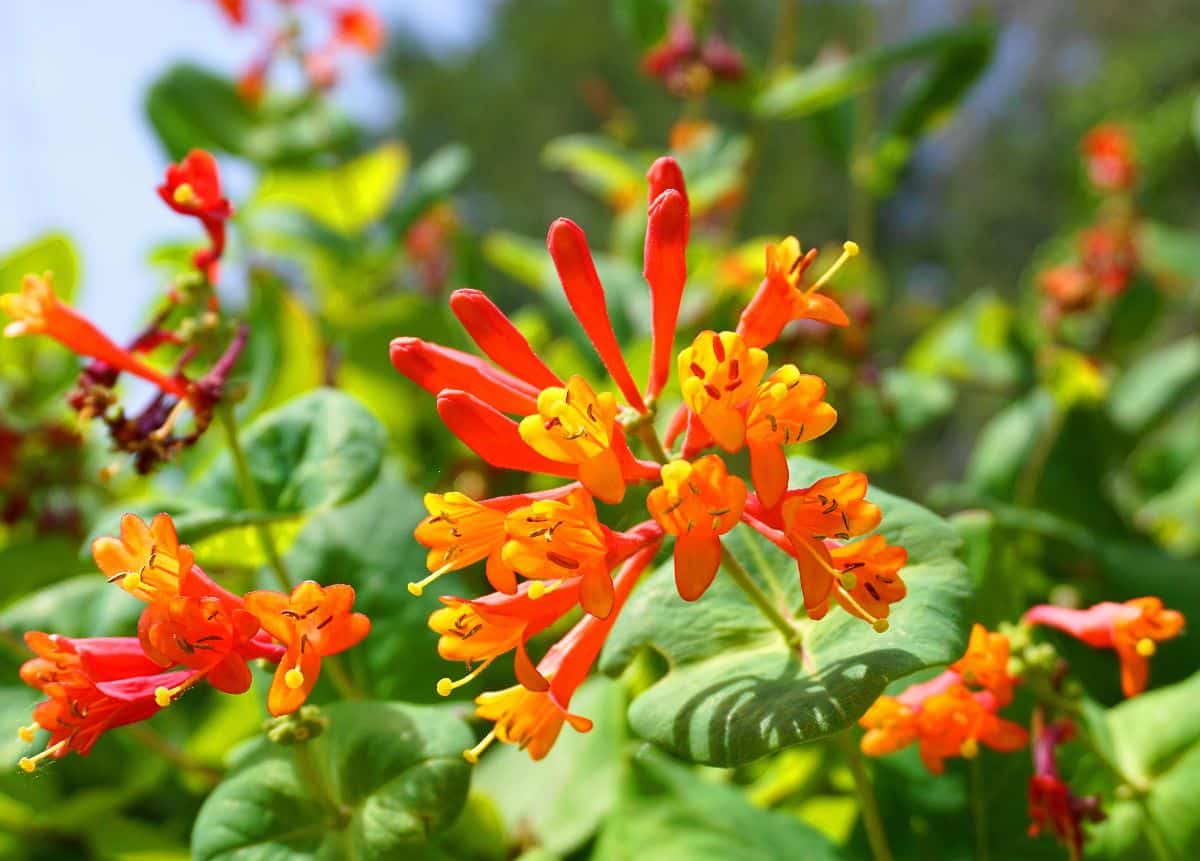
Honeysuckle roots well from bud tip cuttings. These portions of the stem are actively growing and are ready to root.
To Propagate Honeysuckle Plants from Cuttings
- Fill a container or pot with a pre-moistened medium of your choice. A 1:1 ratio of potting mix and sand works well. Make sure the container has drainage holes in the bottom.
- Select pieces of stem about 4 inches long. An ideal cutting will have the growing tip and top leaves and at least one node below that.
- Trim your cuttings off with sharp scissors or secateurs just below a node.
- At the top of the cuttings, use your fingers to pinch off and remove the growing tip of the shoot, but don’t remove the other leaves at the tip. We’ll keep a couple of those.
- Gently remove the leaves from the bottom nodes. These stripped nodes are where roots will develop.
- Keep the cuttings in water after harvesting them from the plant. Don’t let the freshly cut ends dry out while you work.
- Dip the end of the stem in a rooting hormone.
- “Stick” the cuttings, right-side up, in your rooting mix. Make a hole with a pencil and then firm up the soil around the cutting if you like. The cutting should have all the stripped nodes buried.
- Multiple cuttings can be placed several inches apart in the same container and repotted later once they have rooted. Try to set them far enough apart that the leaves don’t touch.
- Cover your container with a humidity dome or plastic bag and place it in a bright location out of direct sunlight. The bag or dome will help keep the humidity high and prevent the cuttings from drying out.
- In 3-4 weeks, you can check the progress of your new honeysuckle’s roots by gently giving the stem a little tug. If there is resistance, your cutting has grown roots.
Honeysuckles will sometimes begin sprouting new growth at the tip before they have much of a root system. Be patient and wait for roots. If they start poking out the drainage holes, they’re ready!
At this stage, you can plant them into temporary beds to grow larger or pot them up for a while. Once they are well established, they can move to their forever homes.
How to Propagate Honeysuckles by Layering
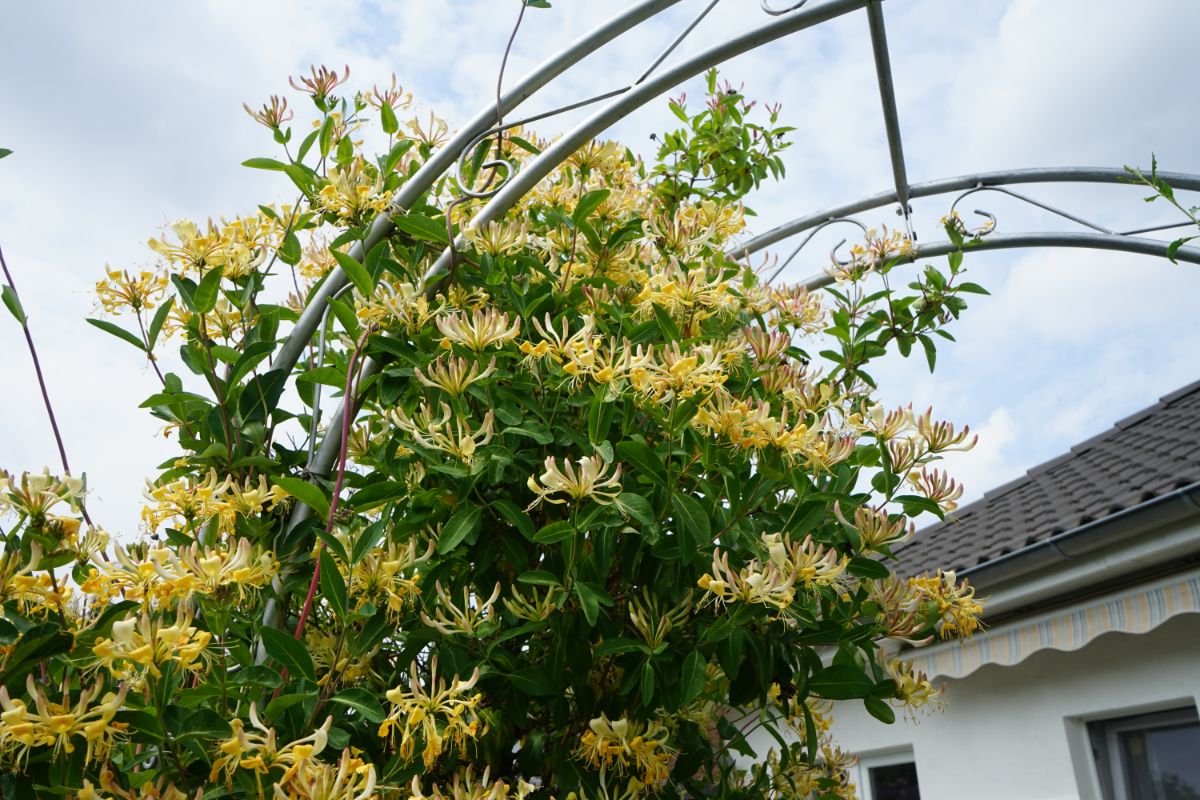
Vine-type honeysuckle can be propagated with a technique called simple layering. Basically, you are just bending an existing low-growing stem to the ground and holding it there until it roots. Wounding the portion of the branch that you bury in the soil increases the likelihood of rooting.
To Layer a Honeysuckle:
- Select a low-hanging and flexible piece of vine.
- Bend it gently to the ground or over a pot.
- Remove the leaves from the portion of the branch that will be in contact with the ground. You want a piece of the vine sticking up on the other side, eventually becoming the top of the new plant.
- Using a knife or the edge of your scissors, scrape the bark along the underside of the branch for 1 or 2 inches around a node.
- Bury the scraped portion of the branch and use a rock, landscape staple, or another device to hold it down. The remainder towards the tip should be sticking out of the soil like a new plant. Keep the soil slightly moist but not soggy.
Honeysuckles propagated by layering may not be ready to separate from the parent plant until the following growing season. However, layering of vining honeysuckles is hard to beat as an easy way to get more vines for free.
Tips for Growing Honeysuckles
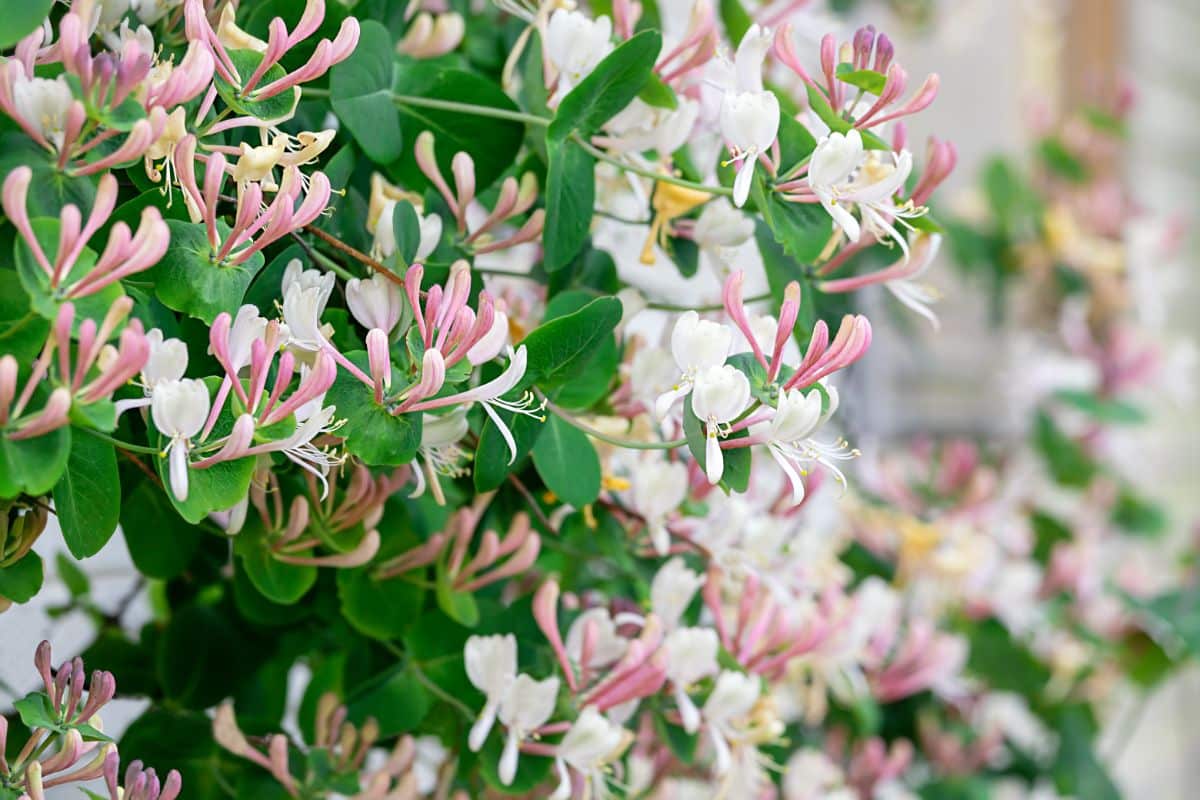
Honeysuckles are a low-maintenance plant but do require some annual care. A little pruning yearly will keep your honeysuckle from looking old and tangled.
Some bloom on new wood, some on old wood, and some on both. If you aren’t sure which you have, pay close attention in the spring. Identify some old wood and new wood and mark them with tags. Soon you’ll know which are blooming. Knowing whether your honeysuckle blossoms on old or new wood determines when you should prune it.
Prune varieties that bloom on old wood immediately after flowering in the summer. Those that bloom on new wood can be pruned anytime but are usually pruned in late winter or early spring before the plant comes out of dormancy.
Soil, Sunlight, and Fertilizer Needs of Honeysuckles
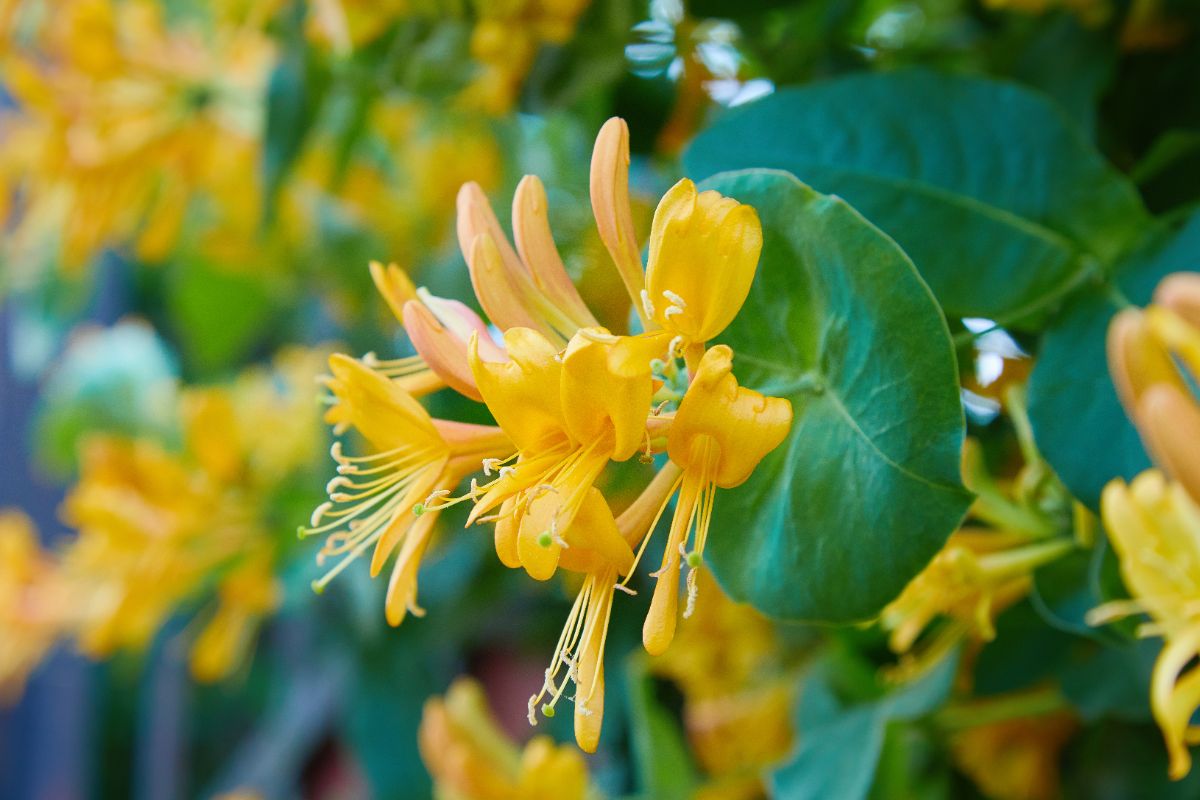
Most honeysuckles enjoy partial to full sun, with some shade on the roots. Their natural habitat is at the edge of woodlands, so mimic that with your planting. In general, more sun will mean more blooms, but if you are in the southern portion of their range, consider a location with protection from the hot afternoon rays.
Honeysuckle is not particular about its soil but will grow best in a well-drained, cool, moist location. The north side of the fence is a perfect location. They can be fertilized in spring with a general-purpose slow-release fertilizer.
Once established, honeysuckles are fairly drought-tolerant and trouble-free.


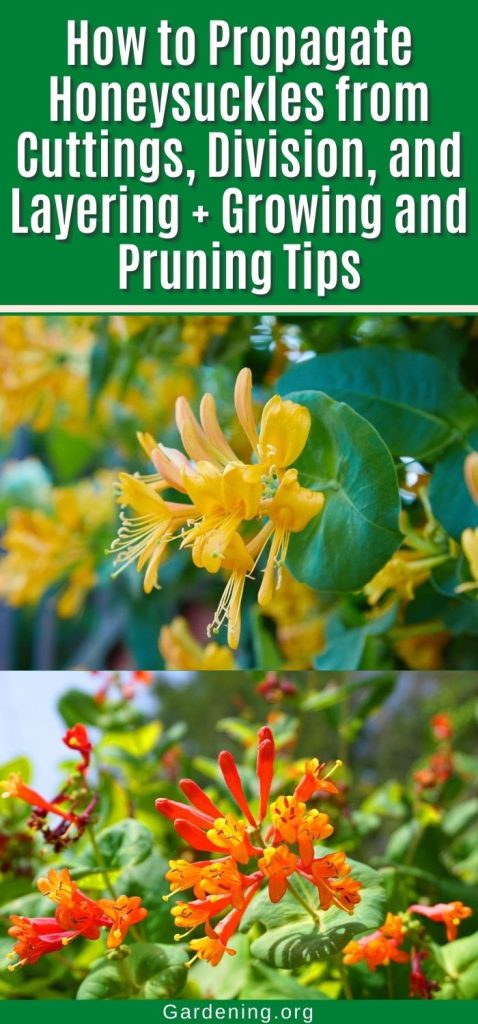
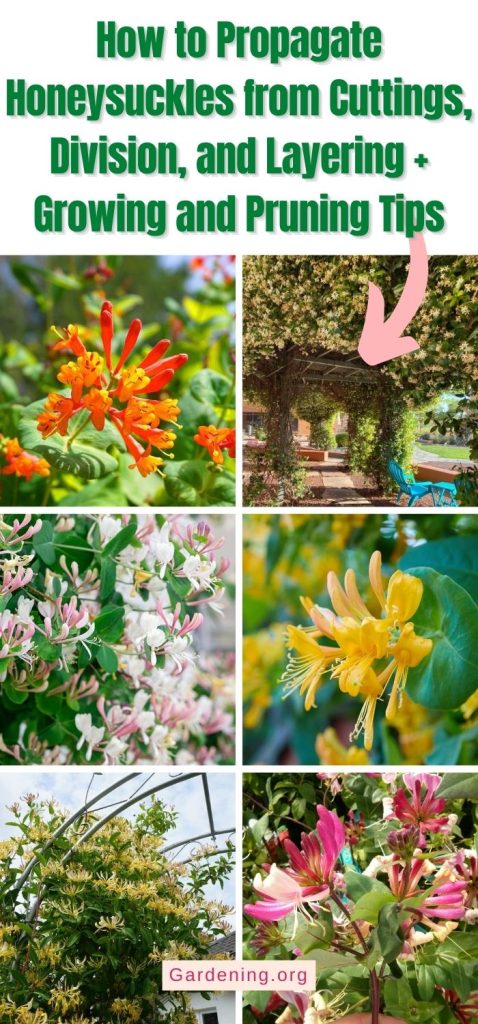
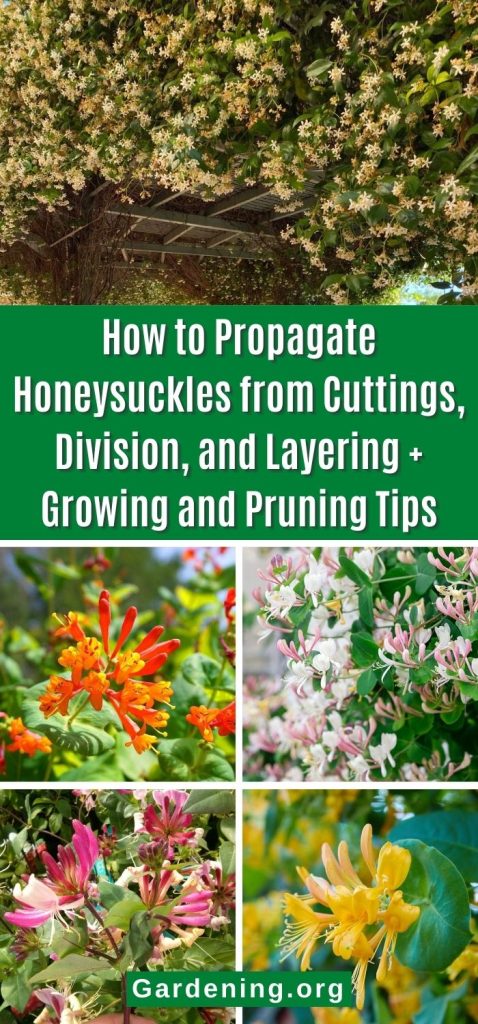

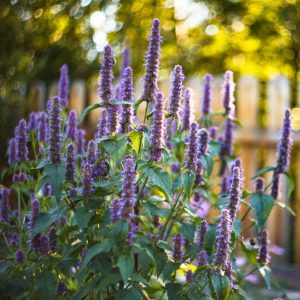
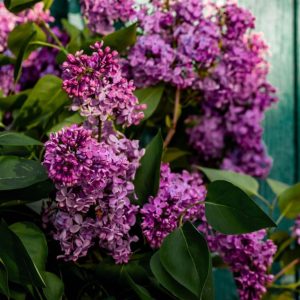

Leave a Reply